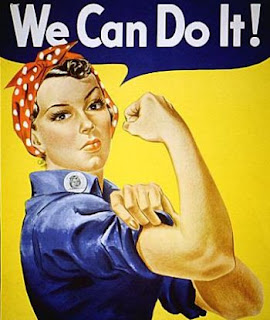Women
International Women’s Day: Timeline, History and Today
If you happen to be visiting Romania these days, you’ll be surrounded by different stalls selling Mărţişor (if you’re curious to know what that is, you can learn more about it here) and flowers. Lots and lots of flowers.
- March 8, 1857 – protest of women working in the textile industry in New York, which criticized working conditions and low wages. Protesters were attacked by police
- March 1859 – New York textile industry employees form their first union
- March 1908 – 15,000 women protest in New York demanding reduction of working hours, better pay and voting rights
- February 28, 1909 – first celebration of International Women’s Day, after the Socialist Party of America issued a statement to this effect (it was the last Sunday of February, and it continued to be celebrated like this until 2013)
- 1910 – the first Women International Conference is organized in Copenhagen and decide to establish an International Women’s Day. The idea was presented by Klara Zetkin as an International Women’s Day to be celebrated on the same day (which was not yet decided) in every country on the globe, symbolizing the efforts of all women in the world for a better life (right to education, right to vote, the right to work and to hold public office).
- March 19, 1911 – over a million women in Austria, Denmark, Germany and Switzerland celebrate International Women’s Day
- February, 1913 – Russia celebrated International Women’s Day for the first time and decided the date of 8th March as the official date, which remained the same until today.
- March 8, 1913 – Women in several European countries protesting against the increasing tensions in Europe
- March 1917 – Reacting to the death of over 2 million soldiers during World War I, Russian women started a protest strike called “bread and peace”, which began on 23 February 1917 in the Julian calendar (March 8 in calendar Gregorian). Four days after the start of the strike, the Tsar (Nicholas II of Russia or Nikolai Alexandrovich Romanov) was forced to abdicate and the provisional Government granted women the right to vote. Alexandra Kolontai- which at that time was the minister in the first government of the Soviet Union – was the one who persuaded Lenin to proclaim the day of March 8 as offcial Women’s Day
- May 8, 1965 – International Day of Femi is declared non-working day in the USSR
- 1975 – International Women’s Day was officially recognized by the United Nations. United Nations proclaimed 1975 the International Year of Women, and the period 1976-1985 became the UN Decade for Women
- 1982 – a number of women from Iran make a very courageous gesture by removing their burkha (a gesture which was illegal)
- 8 March 2005 – a worldwide march is organized to popularize a “World Carta for Women”
- March 8, 2009 – The International Committee of the Red Cross warned that nursing women is ignored in many countries at war

Nowadays we have females as minister, women astronauts, women teaching in universities, women who work and have a family at the same time. In the media we increasingly see models of strong and achieved women. Although the mentality has changed much from the years when the International Women’s Day was just an idea or from its first celebration, there is still discrimination against women. Although for many of us on the 8th of March is a day of gifts and flowers, love and appreciation, there are still women for which this day represents hope and strive for better. Women are still not paid equally, not present to the same extent as men in politics and business, and domestic violence is still a serious problem even in the present.
In Algeria, it is a palpable truth, starting with the struggle for liberation from French occupation, women have fought with sword in hand alongside their men. In the 70s there were always women in parliament and government ministers.
Although it started in the early years of the last century as a social and political celebration, the day of 8th March gradually turned to be a special day when men express their love and affection for women. Usually men gift flowers to all the women in their lives: mothers, sisters, teachers, co-workers.
 |
| Tulips – Symbol of 8th March, Women’s Day, Photo taken by Kıvanç Niş |
In Romania and Bulgaria the traditions of the communist era are still preserved and on March 8, they celebrate Mother’s Day as well. On this day children make gifts to their mothers, grandmothers, and women teachers. When i was little for example, close to mother’s day we would have an arts and crafts class where we would make all kinds of cards and small gifts for our moms. We either painted something or designed using plasticine or even pumkin seeds. Everyone was really excited and tried their best to make the prettiest gifts.
 |
| Girl gifting flowers to her mom on Women’s Day |
On women’s day you can get all kind of discounts at restaurants, bars, plays (if you are in Bucharest, there’s a nice offer right now at the National Theater), even dancing classes. As it is a day of celebrating women, if you are one you can be surprised by the amount of people who would honor you. It can be just exiting the subway while going to work or when a policeman stops to check your papers or even when you are going to the grocery store.
 |
| Policeman ‘fining’ a lady driver with a flower |
If you are wondering what celebrations are organized in your country, you can check the International Women’s Day page, which has posted events for this day around the world.
Women
Study Shows Women Are Worse Off Long-Term After a Divorce

Divorce has a major impact on the life of every person going through it. And for the first months, this impact is equally strong for both men and women. However, according to a recent study published in Demography, in the long term, the consequences of a divorce are much more detrimental for women.
Why Is Divorce Affecting Women More Strongly?
In the beginning, the impact of divorce is nearly the same for all parties involved because people are going through similar changes and emotional turmoil. Of course, on a personal level, there are many differences and there are many different situations as well. However, in general, at this stage people are focused on working through emotional stress and adjusting to their changed circumstances.
However, those changes, while major, also aren’t as meaningful as they would become with time. The main impact of a divorce, which highlights the gender gap, is economic. Simply put, the difference is that while men regain and even improve their financial position in the majority of cases, women face a high risk of poverty.
In the end, it all boils down to a major loss in household income. While men, statistically, reduce their expenses following a divorce, which means accumulating a fortune over time. Women suffer the exact opposite. Their expenses increase as they need to maintain a household and often care for children. And while the situation with equality in the workplace has improved in recent years, it’s still far from ideal.
As a result, the majority of women earn less money by default, and the situation is even worse for single mothers. Alimony and child support payments are often negligible and do very little to alleviate the chronic financial strain imposed on women by divorce.
What Can Be Done to Change the Situation for the Better?
As long-term financial impact is the major problem, it’s wise to do everything possible to reduce this impact from the very beginning. Therefore, the first thing to do is to cut the cost of the divorce so that both spouses leave the relationship with maximum available assets.
The most effective way to reduce these costs is to forego hiring a lawyer. Today, it’s possible to complete divorce online or use a mediator to get an uncontested divorce. The former option saves the most money while the latter can be used by people who cannot agree but do not want to take their case to court.
Fair division of property is another issue that must be tackled with an eye on the future. However, this matter is extremely sensitive and will be largely guided by the laws of the state. Therefore, the only chance women have to come off better in this is to negotiate the division wisely. It might be better to use assistance from a financial expert when outlining the division plans.
Unfortunately, as the issue of property division is often tied to emotional outbursts, the end result is rarely satisfying for either party.
It’s the same for the matter of alimony and child support payments. Even when they are determined by the court, the payment size is often inadequate and the cases of spouses avoiding these payments are extremely common. However, it’s a fact that enforcing the payment more strictly will go a long way to help alleviate the gender gap in the divorce consequences.
But the most important change that needs to happen in order to reduce the long-term detrimental impact of divorce on women is to ensure they have equal work opportunities and do not have to carry that much of the financial strain caused by a broken household. Unfortunately, the progress in this area is slow. Raising awareness is the first step that could help make a worthwhile change.
Women
So You Want to be a Female Solopreneur: 4 Things You Need to Do First

Becoming a solopreneur is one way that many women create careers that earn them income outside of a traditional employment situation. Solo entrepreneurship is popular and growing. According to The Balance, 41 million people in the United States count themselves as solopreneurs and many of them are making serious money — more than $1.2 trillion for the American economy in just the last year to be exact. This kind of success can happen for you too.
While getting to be self-employed often starts with a dream and a concept, your solopreneur career can also revolve around a unique skill set, but you also need to do a few other things.
Create a Bridge
First, you need to create a bridge. Most women will not be able to quit their jobs and then make enough in self-employment to pay the rent next month. Bridges solve the issue. For some women, they will have enough severance pay or savings to make ends meet until they start to earn enough income to pay the bills. Others will need to take a bridge job — one that involves working fewer hours than you are currently so you have time leftover each day to work on your business.
Build your Brand
Next, you need to build your brand. Writing blog posts, maintaining a social media presence and networking are critical. After all, when you are a solo entrepreneur, you are your business. In general, plan on creating a website and generating some content that is optimized for search engines. You will also need to create a profile on Facebook, Instagram, LinkedIn and Twitter. On these platforms, you have one job — to demonstrate your knowledge about your industry. This content needs to be sharable, relatable, and authentic, and a little visual magic doesn’t hurt.
Buy Better Technology
You will also need to take a look at your technology. You will need a domain name and hosting for your website to start with, but that is just scratching the surface. You are going to need a good computer as well as a variety of different softwares and apps to help you organize your work. Additionally, you are going to need a phone. Solo entrepreneurs are often on the go. You need a mobile phone that can keep up. Look at powerful smartphones like the Apple iPhone 6s. The screen is large enough that you can actually do some work directly from the device, the camera is powerful enough to take photos you can use professionally and Touch ID keeps your phones secure while making it easy to open apps.
Invest in Services
Finally, invest in services. Your iPhone 6s needs to be on a network with a high-quality carrier; dropped calls simply are not professional. You also need to have enough data to actually take care of your business needs, so look for a carrier that doesn’t charge extra fees as your business takes off and your usage increases. Cloud computing services are also important. The right software will capture and categorize your expenses, manage your projects, organize your files and make running your business that much easier.
If you are thinking about becoming a solopreneur, now is the time. Just make sure that you take the right steps to make it happen. Anyone can say that she is in business for herself, but you have to act like you are running a business to be successful. Take the time to plan, prepare and invest in your vision. Your future as a solo entrepreneur depends on it.
India
RSS on Women’s Right: Then and Now – Reforming Indian Conservatives

flickr/vineetradhakrishnan
Not long ago, when RSS mooted the idea of replacing its knickers with trousers, I put forth a conjecture — “If you start dressing like an adult, you start thinking like one.”
Today as I watched an RSS ideologue on prime-time news* waxing eloquent on women’s rights during a discussion on triple talaq, my belief in the validity of the conjecture grew that much more.
Now why do I say that RSS has started acting like an adult (and that it earlier wasn’t)? Time for some history.
Sometime around early 1950s the liberal architects of modern India figured that it is a moral imperative that woman be not treated as second class citizens of India. The constitution of India, of course gave them the equal rights but there were still religious personal laws hiding behind which the various conservatives still propagated patriarchy. To correct this, they brought in the Hindu code bill**. It had the “provisions to allow women to choose their marriage partners, to divorce brutal husbands, and to inherit ancestral property.” (Yes, these basic rights, as they may seem today, were not guaranteed to Hindu women (or any Indian women) from time immemorial.) [Read More: https://en.wikipedia.org/wiki/Hindu_code_bills]
Now RSS, one of the foremost Hindu conservative group, was at the forefront in opposing this bill tooth and nails. Their arguments and opinions at the time, as quoted from Organiser (the official mouthpiece of RSS) were eerily similar to those of All India Muslim Personal Law Board in today’s TV debate.
So, let’s revisit them (and I directly quote Organiser via Ram Guha):
1. “[The Hindu code bill] has nothing Bharatiya about it. The questions like those of marriage and divorce cannot be settled on the American or British model in this country. Marriage, according to Hindu culture and law is a sanskar which cannot be changed even after death and not a ‘contract’ which can be broken any time.” Pretty much the line of reasoning that those opposing triple talaq reforms take today.
2. “[The Hindu Code Bill is] a direct invasion on the faith of the Hindus [and…] its provisions empowering women to divorce is revolting to the Hindu ideology” ~ Organiser, November 2, 1949
3. “We oppose the Hindu Code Bill. We oppose it because it is a derogatory measure based on alien and immoral principles. It is not a Hindu Code Bill. It is anything but Hindu. We condemn it because it is a cruel and ignorant libel on Hindu laws, Hindu culture and Hindu dharma” ~ Organiser, December 7, 1949
4. “Rishi Ambedkar and Maharishi Nehru would atomise society and infect every family with scandal, suspicion and vice” ~ Organiser, December 7, 1949
Yes, that’s right — they thought that a woman getting an equal right in inheritance or right to choose her husband or right to divorce would “infect every family with scandal, suspicion and vice”. I think, now 60 years after the adoption of those bills, we can agree that lot of those assertions were mere exaggerations by the conservative patriarchs to protect patriarchy.
So just keep this history in mind as you see and hear various Maulanas hide behind religious customs to protect patriarchy. And remember — adjusting for the standard of women’s right in India, the only reason why Hindu women are a bit ahead of their Muslim counterparts is because the that early architects of modern India happened to be some liberal with a spine.
So, as I watch the khaki pants argue for women’s right, I cannot but feel glad for their change of stance.
But as Guha says — “Organisations, like individuals, have a right to change their minds. But any such change of view must be accompanied by a frank and open reckoning with why and how it happened.”
So, till the time I am clear how this new-found concern for Indian women came about, my support to this government and its ideological mentors will obviously of case specific.
[polldaddy poll=9578409]
-

 Travel11 months ago
Travel11 months agoImmerse Yourself in Nature: Explore Forest Bathing with a New Guidebook
-

 Europe11 months ago
Europe11 months agoBarcelona and Athens: cities that will leave an everlasting impression
-

 Technology11 months ago
Technology11 months agoHow Virtual Fly Elevates the World of Flight Simulators
-

 Health11 months ago
Health11 months agoExperience in clinical quality: What is it, and why is it important?
-

 Travel8 months ago
Travel8 months agoEnjoy a luxury holiday in Zanzibar
-

 Business7 months ago
Business7 months agoServiceNow Development Consultancy: Business Process Automation as Disruptive Technology
-

 Environment8 months ago
Environment8 months agoThe Future of Fashion: The Rise of Eco-Conscious Brands in the Luxury Market
-

 Business10 months ago
Business10 months agoScreen Printing Services: A Beginner’s Guide to Avoiding Mistakes and Maximizing Your Investment







